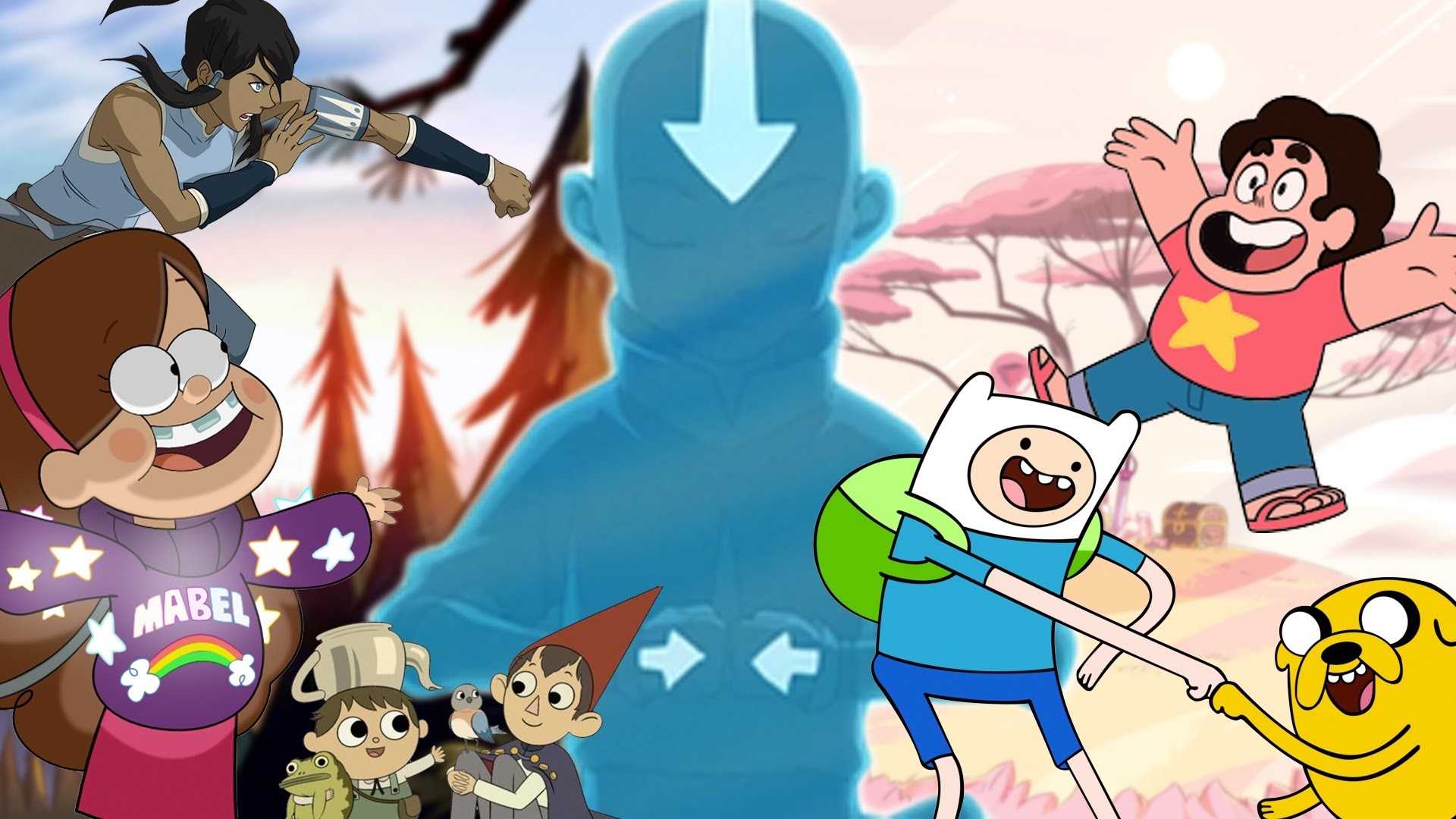The New Golden Age of Cartoons


In the mid to late 2000s, good children cartoons were scarce on television, especially compared to the progressive cartoons of the ‘90s and the Cartoon Cartoons of the early 2000s. Sure we’ve had critically acclaimed series such as Avatar: The Last Airbender and Phineas and Ferb, but those were the minority on television channels bloated with Johnny Test and modern episodes of SpongeBob SquarePants. However, over the last few years, cartoon programming has been emerging left and right with creative ideas, beautiful animation, engaging stories and characters, and witty humor that not only entertain children, but teens and adults as well.
This new Golden Age began with the premiere of Adventure Time on Cartoon Network in 2010. The animated show gained a massive fan base due to its unique design, characters, and ideas that had been lacking from most cartoons before it. The success of the show inspired others to create new cartoons that exceeded even the brilliance of Adventure Time. Thanks to these shows, cartoons are no longer thirty minutes of mindless entertainment, but are now tackling mature problems and themes that you would see in more adult programming while still keeping the charm any children’s cartoon should have.
For example, Steven Universe has a unique undertone of identity, which is an important lesson especially in today’s age of social media. Disney’s Gravity Falls not only broke Disney’s viewership records, but it broke viewer’s hearts when mistrust tore apart the family of characters they had grown to love. Avatar and its sequel series, The Legend of Korra, demonstrated the values and ideas of East Asian philosophy through top-notch storytelling that both children and adults could comprehend and enjoy. These animated shows are pushing the limit of what has been done on kids programming by dealing with the complex issues of abandonment, ethics, politics, depression, sexuality, and more that haven’t even been touched upon by any kids’ (and even some adult) shows in the past.
For the first time in years, good kids’ shows have become the norm. With networks finally realizing that effort and dedication help make a show more profitable, there are dozens of cartoons competing head to head. Adventure Time and Gravity Falls are being praised for their mystery element that allows their audience to uncover clues using observational and puzzle solving skills; Star vs The Forces of Evil and Wander Over Yonder tie in the value of responsibility with hilarious storylines; and the eerie atmosphere and strange imagery of Over the Garden Wall inspires appreciation of the arts. Audiences have never before been so involved in what seem like simple television shows. Of course there is still mindless garbage out there, but poorly written shows are the minority now. With the amount of intelligent animated content for both children and adults, it’s hard to deny that the 2010s is the new Golden Age of cartoons.
The next time you’re flipping through television channels or browsing Netflix late at night after you’ve done (or didn’t do) your homework, don’t feel ashamed to check out a cartoon, because, contrary to what you may think, they’re much more than just dumb kids’ shows.
